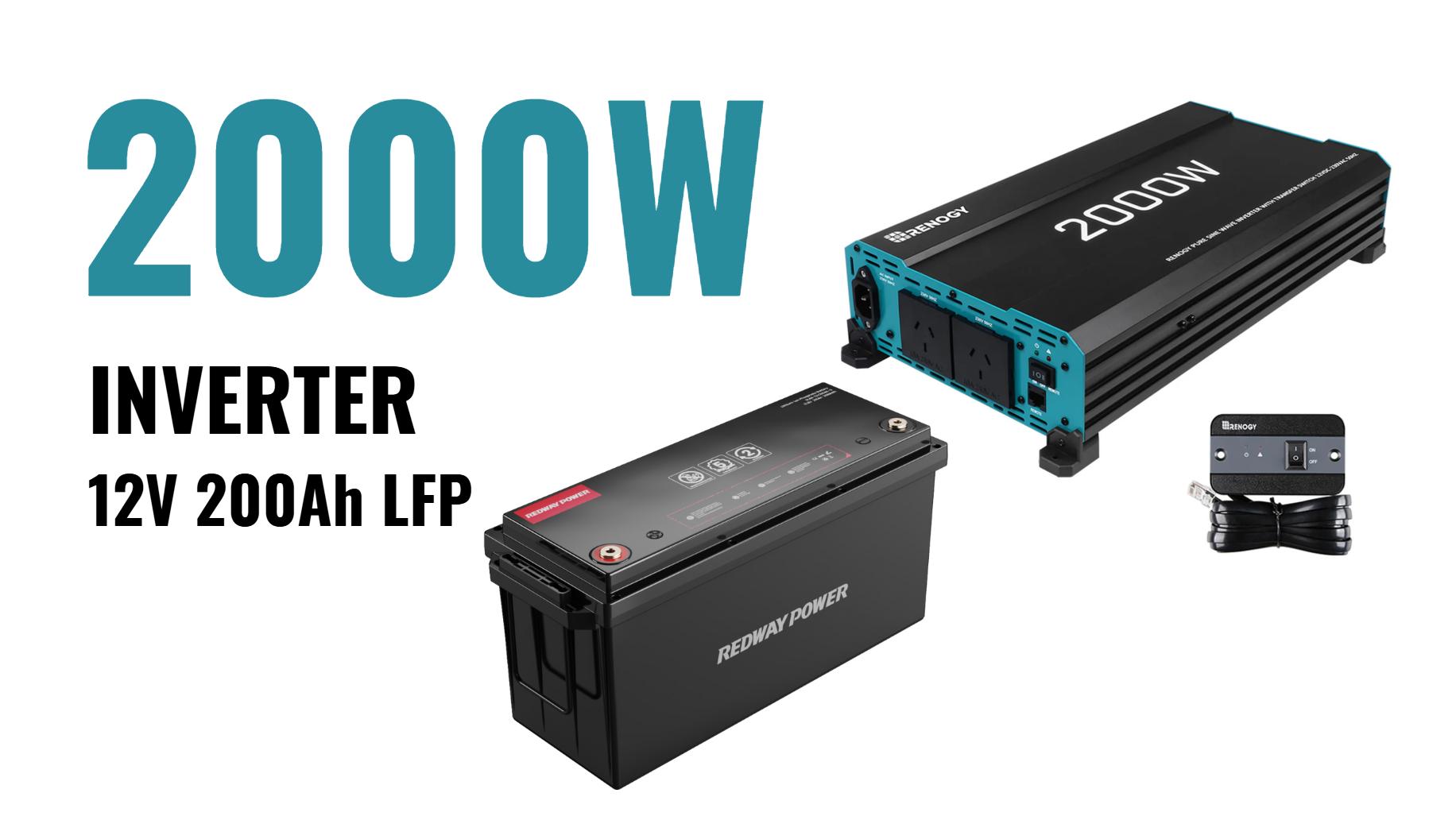
How Many Lithium Batteries Do You Need for a 2000W Inverter?
To power a 2000 watt inverter, the number of lithium batteries required depends on the total energy demand and the capacity of each battery. Generally, you will need to calculate the amp-hours (Ah) required and match that with your battery’s specifications. Understanding these factors helps ensure you have sufficient power for your needs.
How do you determine the number of batteries needed for a 2000 watt inverter?
To determine how many lithium batteries you need, first calculate the total watt-hours (Wh) required and then convert that into amp-hours (Ah) based on your battery voltage. The formula is:
For example, if you plan to run a 2000 watt inverter for 2 hours:
Next, convert watt-hours to amp-hours using the formula:
Assuming you’re using 12V lithium batteries:
Chart: Battery Requirements Based on Usage
| Inverter Load (W) | Hours of Use | Total Wh Needed | Required Ah at 12V |
|---|---|---|---|
| 2000 | 1 | 2000 | 166.67 |
| 2000 | 2 | 4000 | 333.33 |
| 2000 | 3 | 6000 | 500 |
What is the formula to calculate battery capacity for an inverter?
The formulas used to calculate battery capacity are:
- Total Watt-Hours Needed:
Total Watt Hours=Inverter Wattage×Hours of Use
- Convert to Amp-Hours:
Amp Hours=Total Watt Hours/Battery Voltage
These calculations will help you understand how much energy you need from your batteries.
How does the type of battery affect the number needed?
The type of lithium battery can significantly impact how many batteries you’ll need:
- Lithium Iron Phosphate (LiFePO4): These batteries typically have higher depth-of-discharge capabilities and longer lifespans, allowing you to use more of their capacity without damage.
- Lithium Polymer or Lithium Cobalt: These may have different capacities and discharge rates, affecting how many you need based on their specific ratings.
For example, if using 100 Ah LiFePO4 batteries, you’d need:
For 333.33 Ah required:
Thus, you’d need 4 batteries to meet your requirements comfortably.
What are practical examples of battery configurations for a 2000 watt inverter?
Here are some practical configurations based on different types of lithium batteries:
- Using Four 100 Ah LiFePO4 Batteries:
- Total Capacity: 4×100=400 Ah
- Run Time: Approximately 1.2 hours at full load.
- Using Three 150 Ah Lithium Batteries:
- Total Capacity: 3×150=450 Ah
- Run Time: Approximately 1.35 hours at full load.
- Using Two High-Capacity Lithium Batteries (200 Ah):
- Total Capacity: 2×200=400 Ah
- Run Time: Approximately 1.2 hours at full load.
Chart: Battery Configurations for a 2000W Inverter
| Configuration | Number of Batteries | Total Capacity (Ah) | Estimated Run Time |
|---|---|---|---|
| Four 100 Ah LiFePO4 | 4 | 400 | ~1.2 hours |
| Three 150 Ah Lithium | 3 | 450 | ~1.35 hours |
| Two High-Capacity (200 Ah) | 2 | 400 | ~1.2 hours |
Why is it important to consider inverter efficiency when sizing batteries?
Inverter efficiency is crucial because it affects how much power is actually usable from your battery bank. Most inverters operate at around 85% efficiency, meaning that not all the energy stored in your batteries will be converted into usable power.To account for this, adjust your calculations by dividing by the efficiency factor:
For example, if you need 333.33 Ah and your inverter is 85% efficient:
This means you’ll need more capacity than initially calculated.
Industrial News
The market for lithium batteries is expanding rapidly as demand grows for renewable energy solutions and electric vehicles. Innovations in battery technology are leading to higher capacities and efficiencies, making them more suitable for high-wattage applications like inverters. As manufacturers focus on sustainability and performance, consumers can expect better options in the near future.
Expert Views
“Understanding how to size your battery bank correctly is essential for maximizing efficiency and ensuring reliable power supply,” states an industry expert. “With proper calculations and considerations for efficiency losses, users can effectively meet their energy needs without over-investing in unnecessary battery capacity.”
FAQ Section
- How many lithium batteries do I need for a 2000 watt inverter?
You typically need around 4 x 100 Ah batteries or equivalent capacities to run a 2000 watt inverter effectively. - What factors influence the number of batteries needed?
Factors include total energy demand (watt-hours), battery capacity (amp-hours), and inverter efficiency. - How does inverter efficiency affect my calculations?
Inverter efficiency reduces usable power; account for this by adjusting your required amp-hours accordingly. - What types of lithium batteries should I consider?
Lithium Iron Phosphate (LiFePO4) is preferred due to its longevity and safety features compared to other lithium types.
